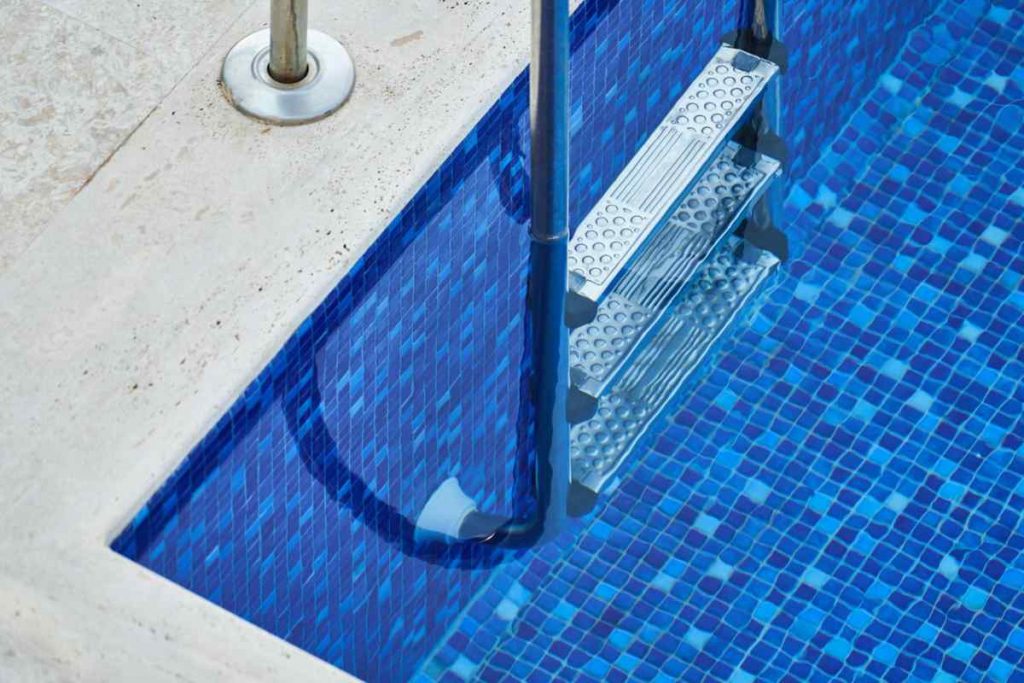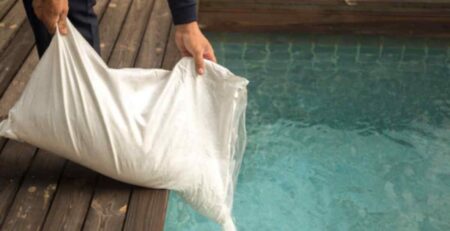Step by step for pool cleaning and maintenance

Pool cleaning is a very important task that allows you to enjoy it at any time, especially during the summer heat waves. In the end, it is a moment of joy and not disgust, where water disinfection plays a fundamental role.
Even if you don’t use your pool as often, pool maintenance is still essential to extend the life of your pool. It should be added that cleaning a pool is not as simple as it sounds and will also depend on the type of pool you have. That’s why we’ll teach you step by step and do it on your own.
How to clean a pool? This is what you need
The maintenance of a swimming pool must be periodic, and not only before using it any day, in addition, to maintain a correct cleaning will make that you can enjoy it during the whole year. I recommend you to visit these ideas to maintain the pool in winter. Otherwise, dirt is likely to accumulate on its surface or turn green.
The aim is to ensure that the water remains hygienic at all times, as it is one of the main breeding grounds for bacteria. Besides, we all like to enjoy pure and crystal clear water.
Before you start cleaning a pool, it is important that you equip yourself with the necessary materials for an efficient job. They should be as follows:
- Pool cleaning brush.
- Spade or mesh net.
- Automatic or manual vacuum cleaner or floor cleaner.
- Kit with reagents for water analysis.
- Flocculant in case of green water.
Brushes the pool wall and floor
The first step is to use the net, which can be a spade net or a mesh net. Either way, the idea is to remove any items that are on the surface of the water, such as dry leaves or dead insects.
Also, make sure there are no objects on the bottom of the pool, such as balls or fruit falling from trees. In short, nothing solid that can remain on the bottom of the pool and hinder the cleaning process.
Now, you will proceed with the brush to scrub both the floor and the walls of the pool, always pushing it from top to bottom. Always try to hold it by the highest part with your dominant hand, and with the other hand more in the middle.
This process is known as shock treatment, which seeks to remove the dirt that accumulates on the inside surfaces of the pool.

Make use of vacuum cleaner or pool cleaner
To make it less cumbersome, the easiest thing to do is to have an automatic bottom cleaner, a robot that works independently and will save you the hassle. You also have the option of using a manual one, but you will have to intervene at all times.
In the latter case, you will need to have a hose, a telescopic handle and a bottom cleaner with wheels.
You will first assemble the cleaner by attaching the hose to the vacuum port. Once this is done, you will put the equipment in and then with your hand close to the wall of the pool, you will insert the hose completely into the water. The idea of this procedure is to keep air out of the hose.

The next step is to connect the hose to the mouth of the vacuum cleaner, which normally contains a safety cap. After that, you will activate the drain filter and run the bottom cleaner over the entire bottom of the pool.
Once you’ve finished using the cleaner, you’ll pass the brush over the floor and walls again to finish cleaning.
Cleaning pool filters and accessories
Coming to the last steps, you will proceed to clean the filters of the pool, as well as the accessories it has. The latter can be skinners, baskets, grids, reflectors, mouthpieces, among others.
It is vital for water hygiene that the automatic filters are always kept as clean as possible. This is so that they can run for 5 to 7 hours a day and keep the water pure and free of other agents.
Checking the water status with chemical reagents
To verify that the cleaning has been optimal, it is important that you evaluate the chlorine and pH levels of the pool water.
Checking the condition of the water will depend on the manufacturer you use, as some use different measurement methods. In some cases, you only need to insert a strip in the water and it will give you the results after a short period of time.
Also, there are other procedures in which you take a sample of the water and put it together with a few drops of OTO. That way, you will get the pH level.
It is essential not to skip this step, because in the end to enjoy a clean and safe pool, both pH and chlorine play a vital role.
How to clean a green pool?
When the water in a pool is green, it means that it has not been maintained for a long period of time. It usually occurs when the pool is not covered during the fall and winter, nor has it had the necessary chemicals applied to clean it. As a result, the water becomes cloudy or takes on this characteristic colour.
Added to this is the presence of algae inside the pool, which causes the walls and floor to become slippery and slimy. However, even though it is in this state, there is still a solution rather than emptying it.
For that, you will have to restore the pH level of the water, in addition to a deep and correct cleaning of all the surfaces of the pool. While, to remove the green colour caused by the dirt, you will need flocculant.
The flocculant is nothing more than a liquid whose function is to group the small particles that are on the surface of the water. In this way, agglomerates are created at the bottom of the pool called flocs.
That means, it will collect all those particles that give the water its green color and gather them in one place: the bottom.
Therefore, it is not a chemical that removes the green colour as such, but it groups together the causative components so that they are much easier to clean.
How to use flocculant for pool cleaning?
First, you must take into account the pH and chlorine level in the water when it is in this green state. If the pH is between 7.2 and 7.6 and the chlorine between 0.5 and 1.5 g/l, there will be no problem if you pour in the flocculant.
Then, you will proceed to spread the chemical in the water, and then scrub the walls and floor of the pool vigorously with a brush. Thanks to that, we give movement to the water, at the same time that the flocculant reaches all areas of the pool.
Now, for the right amount, this will depend on the volume of water in the pool. As a general rule, it is always between 750 ml per m3 of water. However, it is always advisable to read the flocculant manufacturer’s instructions for any details.
Once the flocculant has been poured in, all that remains is to let it take effect overnight. That way, the next day, you’ll only have to take care of removing the accumulation of particles on the bottom of the pool.
On the other hand, if you have an automatic filter, it will remove the water for you. This is because they usually come with a recirculation function.
Similarly, to avoid as far as possible the generation of algae on the surfaces of the pool, it is advisable to brush it frequently. Also, use the necessary chemicals so that the water remains pure and crystalline.

Importance of pool cleaning
All swimming pools, regardless of the materials used in their manufacture, their structure, size or design, require periodic maintenance. If possible, clean it once a week.
Once people enter the pool, the water is left with all their fluids, such as sweat, creams or protectors. Therefore, these join with chlorine and other chemical elements such as nitrogen, allowing the development of chloramines.
Chloramines, in fact, will be the cause of bad odor, skin or eye irritation, in addition to promoting the development of bacterial agents. This means that the water will not be in a condition for you to enjoy it.
Therefore, constant cleaning of the pool will allow the water to remain clear, pure, crystalline and free of any polluting agent. In this way, it will be possible to extend the useful life of both the structure and the equipment used for its maintenance, such as filters.
In the end, the objective is to be able to enjoy a pleasant time, where the cleanliness of the pool is a fundamental factor.


